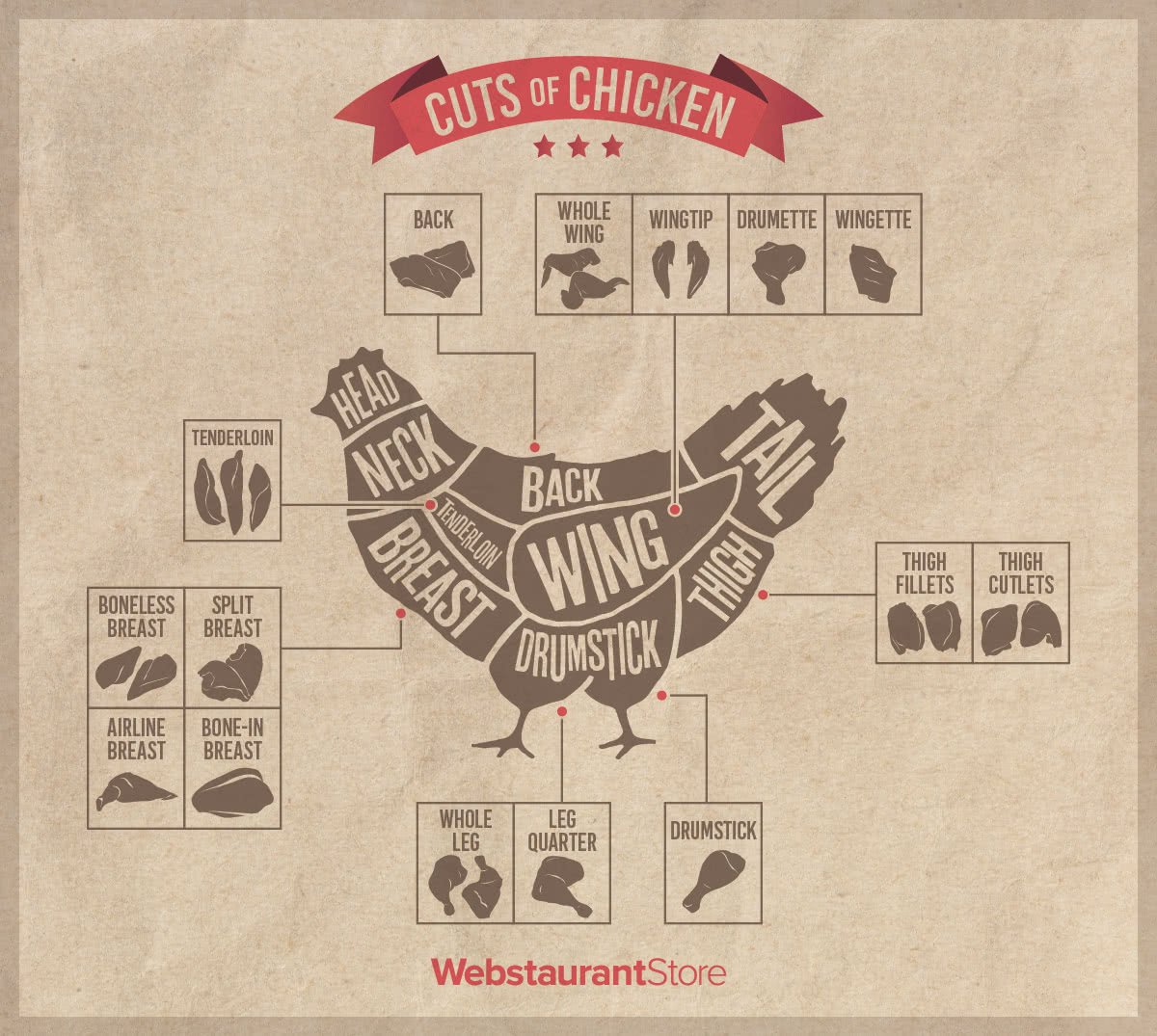
Types of Chicken Cuts
Chicken is one of the most popular meats in the world and, thanks to its versatility, is a staple part of cuisines in many cultures. It's easy to use every part of the bird to create fantastic dishes, reducing food waste while serving customers their favorite food. From tenderloins to drumsticks, there are multiple types of chicken cuts available with unique textures, flavors, and cooking methods. Use this guide to explore the most popular types of chicken cuts and their characteristics to make informed decisions when selecting poultry for your butcher shop, restaurant, or catered event.
Shop All Bulk Chicken
Use the following links to learn more about types of chicken cuts:
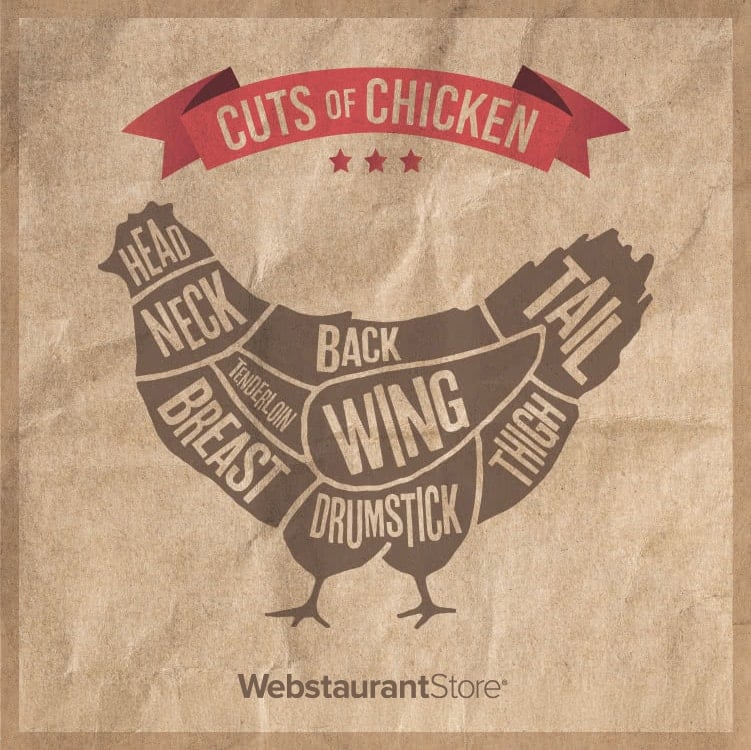
The parts of a chicken used in cooking are the breast, tenderloin, back, wing, leg, drumstick, and thigh. These primary parts have different flavors, textures, and preparation methods due to myoglobin and fat content. However, you can also serve chicken as a whole bird, which offers variety to customers looking to taste a little bit of everything. Since numerous meals contain chicken meat, knowing how each part lends itself to specific dishes and cooking methods allows you to choose the best chicken cuts for your menu.
Types of Chicken Meat
Check out our list of the types of chicken meat you can use in your establishment. We compiled details about their various cuts, whether they are dark or white meat, and the best cooking methods for each part.
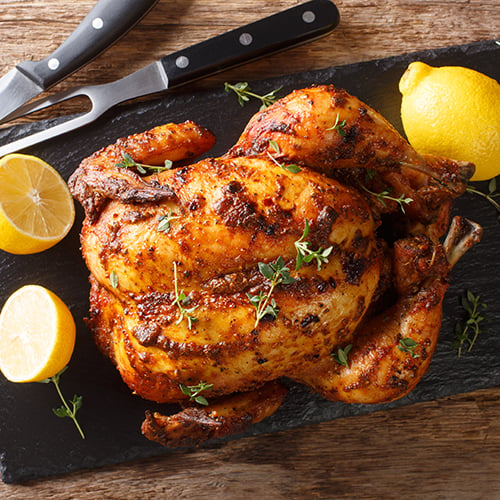
A whole chicken includes every chicken cut without the giblets and provides more options for dishes than buying a specific cut. Moreover, you can prepare a whole chicken in numerous ways, including smoking, deep frying, and grilling. Different seasonings and marinades provide more flavor varieties. You can buy a quartered whole chicken, which has two breast quarters and two leg quarters, or an eight-piece whole chicken.
However, the most significant benefit to a whole chicken is reducing food waste by maximizing returns. Use the carcass to make delicious chicken stock and add leftover scraps to soups and pasta dishes. Shred leftover cuts to use in chicken pot pie, enchiladas, or chili. If you buy poultry with giblets and remove them on your own, the giblets are perfect for authentic Cajun recipes.
- Meat Type: Contains both white and dark meat
- Whole Chicken Uses: Family-style meals, stock, soup, tacos, pot pie
- How to Cook Whole Chickens: Roast, rotisserie, smoke, bake, deep fry, grill, spatchcock
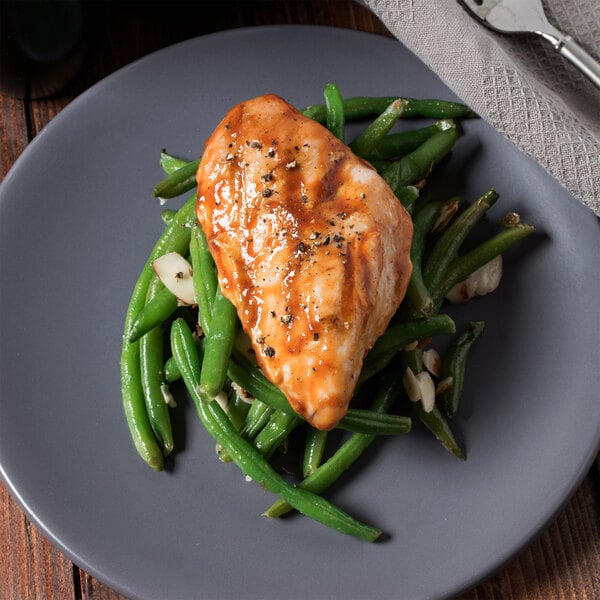
Perhaps the most popular cut, chicken breast is lean, mild, white meat consisting of two halves separated during butchering. This cut consists of the flesh beneath the junction of the sternal ribs and vertebrae. It's more expensive than thighs, wings, legs, and drumsticks and has various health benefits. However, cooking a chicken breast properly is vital because it dries out when overcooked, ruining the dish.
- Meat Type: White meat
- Chicken Breast Uses: Stuffed breasts, paillard, piccata, masala, stir fry, soup, tacos, sandwiches, kebabs
- How to Cook Chicken Breasts: Bake, poach, roast, grill
Types of Chicken Breast Cuts
There are four types of chicken breast cuts:
- Boneless Breast: A boneless chicken breast is a whole breast with all the bones removed. This type is the most expensive breast cut and is extremely popular in the US.
- Split Breast: Cut parallel to the breastbone, a split chicken breast is similar to a bone-in breast. It also might include part of the ribs, which helps it maintain flavor and moisture. You can also purchase boneless split breasts.
- Airline Breast: Also known as a Statler chicken breast, an airline breast has the drumette part of the wing attached. It can be served bone-in or boneless, and the drumette converts the breast into finger food to make it convenient for eating.
- Bone-in Breast: A bone-in breast includes all the cartilage, bones, and tissue in the breast region, making it challenging to dissect but juicier and more flavorful. Chefs use this cut for stuffed breasts at catered events and high-end dining experiences.
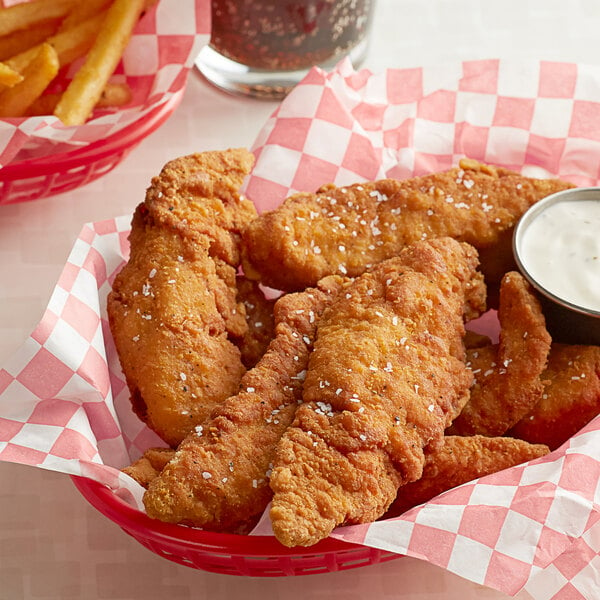
Chicken tenderloin has many names in foodservice, including chicken tenders, fingers, strips, and goujons. Found under the breast cut, tenderloin meat comes from both sides of the breastbone and isn’t attached to the ribs. Due to its location, it has a tender texture and is moister than most white meat cuts. It is perfect for breading and frying for a family-friendly dish.
- Meat Type: White meat
- Chicken Tenderloin Uses: Chicken tenders and other finger foods
- How to Cook Chicken Tenderloin: Fry, bake, grill

Often included in other cuts of meat, the back extends from the base of the neck to the tail and contains the vertical ribs and hip bones. Pieces of the back are also part of some wing and leg cuts, and there’s often not much meat left of this cut after butchering the rest of the bird. While there’s some meat, the bone and tissue content makes it challenging to remove it. As a result, chicken back is primarily used for soup and stock.
- Meat Type: White meat near the breast, dark meat near the legs and thighs
- Chicken Back Uses: Chicken stock and soup
- How to Cook Chicken Back: Boil at high temperatures
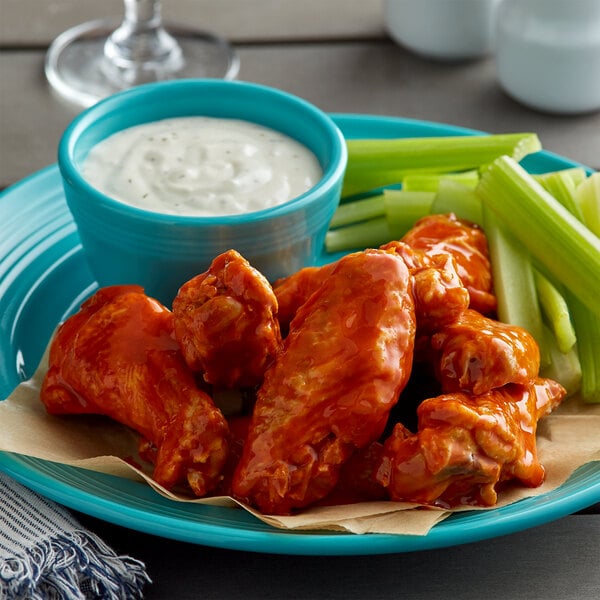
As a staple of sports bars and gameday menus across the country, chicken wings are white meat cuts served either whole wing or in portions. Cheaper than breasts or thighs, wings contain less meat than other cuts without sacrificing flavor and pair well with various sauces. Despite being white meat, wings are juicier than breasts and have a concentrated flavor that makes them great for cooking in a smoker. In addition to regular wing cuts, boneless wings are an option for appetizers and happy hour menus.
- Meat Type: White meat
- Chicken Wing Uses: Buffalo wings, barbecue wings, chicken stock, casual dining appetizers
- How to Cook Chicken Wings: Grill, fry, roast, smoke, broil
Types of Chicken Wing Cuts
There are four types of chicken wing cuts:
- Whole Chicken Wing: As the name implies, a whole chicken wing includes the entire limb with all muscles, bones, and skin. The wingtip is not always included in this cut.
- Wingtip: Though rarer than their counterparts, chicken wingtips are edible and delicious if prepared correctly. This cut consists of the metacarpals and phalanges of the wing and makes excellent hors d'oeuvres when seasoned, baked, and broiled.
- Drumette: A chicken drumette resembles a mini drumstick and is between the second joint and the shoulder. It's the thickest part of the wing and the easiest to eat.
- Wingette: Also known as flats, a chicken wingette is the section between the first and second joints of the wing. They're smaller than drumettes with a flat, thin shape that contains meat between two bones.

Chicken legs are a delicious and versatile cut of meat cooked and served multiple ways. Though many people use chicken legs and drumsticks interchangeably, a leg cut of meat includes both the drumstick and the thigh. Chicken legs also take longer to cook than drumsticks and thighs, and the meat is more flavorful due to the fat and bones inside. It's ideal for a single-person meal since it's filling and contains protein, omega-3 fatty acids, vitamins, and minerals.
- Meat Type: Dark meat
- Chicken Leg Uses: Entrees, stews, roast chicken, grilled chicken
- How to Cook Chicken Legs: Grill, roast, slow cook, bake
Types of Chicken Leg Cuts
There are two types of chicken leg cuts:
- Whole Chicken Leg: A whole chicken leg includes the thigh and drumstick, but the chicken back portion is not part of the cut. This cut also sometimes has the oyster piece of meat lying in front of the hip joint.
- Leg Quarter: While it still has the thigh and drumstick, a chicken leg quarter also contains a portion of chicken back. Some cuts also include the tail.
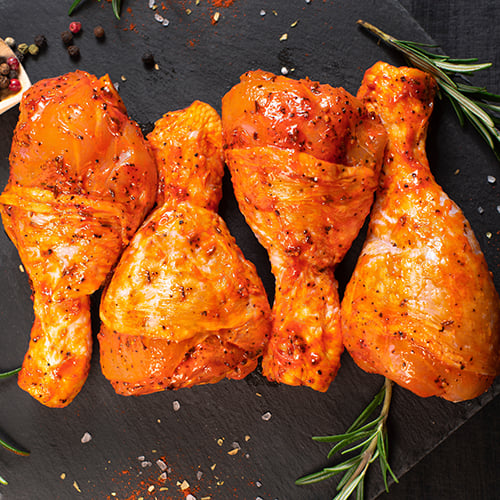
As the lower part of the chicken leg, a drumstick is often served alone as a crowd-pleasing finger food. The cut is separated at the hock and knee joints and contains the patella with the thigh removed. However, drumsticks are also part of chicken leg cuts with the thigh. With a characteristic pink hue, drumstick meat is very juicy and flavorful. Many people prepare drumsticks with strong seasoning and marinades to enhance the flavor, then grill, bake, or fry them in oil.
- Meat Type: Dark meat
- Chicken Drumstick Uses: Finger food
- How to Cook Chicken Drumsticks: Bread and fry, bake, grill, barbecue, roast

A chicken thigh is the upper part of the leg separated at the knee and hip joints. As a favorite dark meat cut, thighs have more fat, moisture, and flavor than chicken breasts. They are commonly prepared with marinades to bring out the juiciness of the meat with various cooking method options. Additionally, chicken thighs tend to be less expensive than breast cuts.
- Meat Type: Dark meat
- Chicken Thigh Uses: Marinade thighs, gravies, jambalaya, shish kababs, pasta bakes, casseroles
- How to Cook Chicken Legs: Grill, fry, roast, braise, bake
Types of Chicken Thigh Cuts
There are two types of chicken thigh cuts:
- Boneless Thighs: Also known as thigh fillets, boneless chicken thighs require no additional deboning before cooking and are great for stir fry or kebabs. However, they are more expensive than cutlets.
- Bone-in Thighs: Also known as thigh cutlets, bone-in chicken thighs still have the bone and skin attached to the meat. The bone creates a juicer cut of meat cheaper than a thigh fillet.

While these chicken cuts are rare in foodservice, you can still find them at butcher shops or with your whole chicken. Some cultures consider these chicken parts delicacies, making them ideal for restaurants specializing in foreign cuisine. Adding one of these chicken cuts to your menu will pique the curiosity of your customers and set you apart from the competition.
- Neck: Extending from the head to the gizzard, the neck has hard-to-access meat with lots of bone and tissue. Serve it as a salty appetizer or snack, or use it in chicken stock.
- Tail: Chicken tail is a fatty piece of dark meat sometimes served with the back, legs, or thigh. It can be roasted or pan-fried and served as a delicacy, but its high fat content encourages small servings.
- Giblets: Often thrown away and wasted, giblets include the heart, gizzard, kidneys, and liver of a chicken. While the liver can be served alone, you can add other organs to gravy, stuffing, or stock for extra flavor.
- Feet: Though not popular in the US, chicken feet are a staple of many cultures worldwide. While this cut lacks meat, chicken feet contain vital proteins that can aid your body in healing and strengthening.
The difference between dark and white meat is the number of muscle fibers and myoglobin in each type of meat. Dark meat comes from areas with slow-twitch muscles used for long periods, such as the legs, so those regions receive more oxygen and myoglobin as the chicken moves. It tends to have a juicy, flavorful taste compared to white meat and contains many vitamins and minerals.
White meat comes from areas with fast-twitch muscles that only support short bursts of movement, such as flapping wings. Therefore, these areas receive less oxygen and myoglobin, resulting in a lighter color. White meat has a low fat content and is dryer than dark meat, so correct cooking is crucial to maintaining texture and flavor.
What Parts of a Chicken Are White Meat?
The most common white meat cuts of chicken are breasts, tenderloin, and wings.
What Parts of a Chicken Are Dark Meat?
The most common dark meat cuts of chicken are thighs, legs, and drumsticks.
Use the following chicken cuts diagram to understand the different types of chicken cuts.
Related Resources
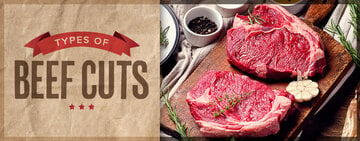
Types of Beef Cuts
Beef is a popular ingredient in nearly every world cuisine, and it's easy to see why. From premium Argentinian asado to convenient fast food burgers, there is an endless number of uses for beef to suit any occasion. Learn how to differentiate between the different cuts and varieties so you can offer guests the perfect piece of beef at your butcher shop or your next event. Shop All Wholesale Beef Use the following links to explore the types of beef cuts out there, so you can make more informed purchases for your menu! Primal Cuts of Beef Chuck Rib Loin Round Flank Plate Brisket Shank Beef Cuts FAQs Beef Cuts Diagram

How to Thaw Chicken
Freezing chicken is a great way to reduce food waste and extend the shelf life of your meat. However, defrosting it improperly to speed up the food preparation process leads to unsafe food and poor quality. Instead of leaving chicken out on the counter, use one of the following three defrosting methods to ensure food safety and quality as you cook. Best Way to Defrost Chicken The best way to defrost chicken is to place the frozen chicken in the refrigerator. Though this is the slowest method, it keeps the chicken out of the temperature danger zone and prevents bacteria and pathogen growth. If you choose this method, plan accordingly so the chicken has plenty of time to thaw. Place the frozen chicken in a freezer bag or rimmed, covered conta

Dark Meat vs White Meat
Both chefs and civilians debate the benefits of white and dark poultry meat. Whether you prefer the lean and mild taste of white meat or the rich and juicy flavor of dark meat, both are delicious when prepared with the appropriate cooking method for the cut. While some people prefer one over the other, many don't know what distinguishes the two. Understanding the characteristics of each will help you make the right choice for your culinary needs. We define white and dark meat, explain the benefits of each, and how they compare to each other. Shop All Chicken and Turkey Click below to skip to the differences between white and dark meat: What Is White Meat? What Part of the Chicken Is White Meat? What Is Dark Meat? What Pieces of Chicken Are
- Topics 1346
- Industrial 55
- Troubleshooting Guides 21
- Restaurant Management 128
- Bar Management 55
- Catering Tips 35
- Bakery Management 42
- Food Trucks & Concessions 49
- Advertising & Marketing 37
- Eco-Friendly Tips 11
- Facility Layout & Design 41
- Coffee Shop Tips 28
- Installation & Maintenance 51
- Janitorial & Pest Control 30
- Safety & Sanitation 88
- Startup Tips 104
- Menu Design 10
- Kitchen & Cooking Tips 81
- Hospitality Management 23
- Pizza & Sandwich Shop Tips 36
- Smallwares 37
- Food Prep 88
- Tabletop Items 17
- Disposables 22
- Calculators & Tools 6
- Consumables 52
- Warewashing & Laundry 18
- Cooking Equipment 90
- Food Storage & Refrigeration 51
- Beverage Equipment 34
- Office Supplies 6
- Resource Type
- In-Depth Articles272
- Buying Guides296
- How-Tos93
- Product Reviews77
